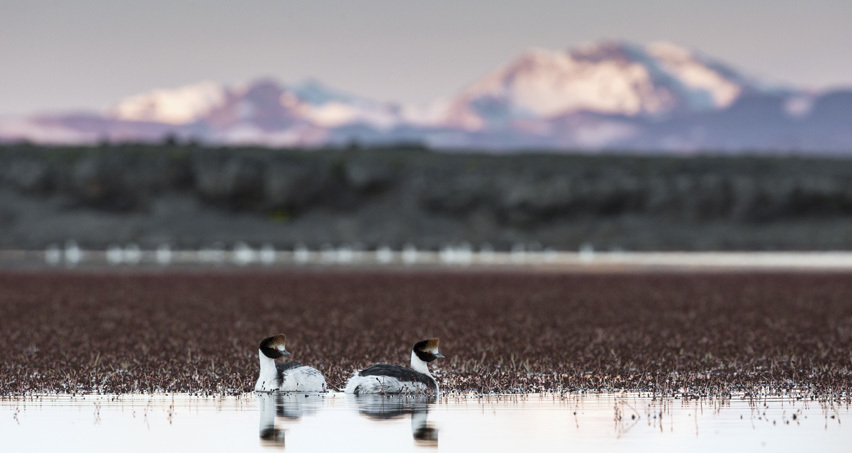bioGraphic: Standing Guard
Every December on the remote basaltic plateaus of southern Patagonia in Argentina, hooded grebes (Podiceps gallardoi) settle in to lay their eggs. Nearby, their personal guardians, field technicians charged with protecting the birds and their nests, stand watch. Armed with binoculars, flashlights, and shotguns, the guardians do whatever they can to eliminate threats to the grebes, although some perils are harder to see than others.
It is an extreme endeavor that requires both patience and warm clothing, says Ignacio “Kini” Roesler, a conservation biologist and ornithologist with Aves Argentinas, an environmental nonprofit in Buenos Ares, one of two main groups dedicated to protecting the hooded grebe. At up to 1,200 meters (3,900 feet) in elevation, the Patagonia steppe is a flat, open desert, dotted with more than a thousand glacial lakes, surrounded by rocky bluffs and framed by the Andes in the distance. The weather here is always harsh—windy and cold, even in the South American summer, when the hooded grebes build their nests on vegetation floating on the lakes.
The work of a colony guardian can be lonely. Other than a teammate or two for company, there is nobody around for hundreds of kilometers, and field stints in this harsh environment can last for weeks at a time. Despite the hardships, though, guardians are regularly reminded that their work is critical. “You are taking all this responsibility for the conservation of species,” Roesler says. “So, it’s pretty good actually—the feeling.”
With an estimated 800 to 1,200 hooded grebes remaining in the world, the species would be on the verge of extinction, conservationists say, if not for around-the-clock vigilance from colony guardians, among other rescue efforts. But such extreme actions also raise questions: Will conservationists be able and willing to maintain this vigil in the long-term? What will happen to hooded grebes if guardians stop showing up? And even with guardians in place, can the birds hang on in the face of such threats as climate change?
Protecting the hooded grebe is an exercise in hope that hints at the future of other endangered species, while testing the limits of how far people are willing to go in the name of conservation.
-----
Read the rest of the story here.

